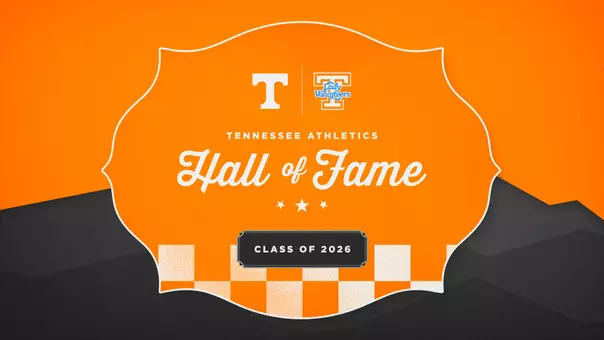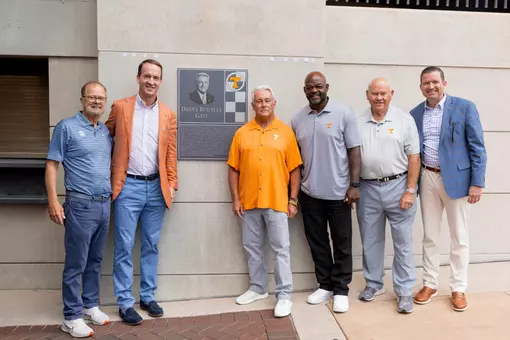University of Tennessee Athletics

NEYLAND STADIUM RENOVATIONS MOVING AHEAD
April 08, 2006 | General
April 8, 2006
The University of Tennessee Athletics Board was informed Saturday that work on Phase I of the Neyland Stadium renovations is progressing on schedule and that the 414-seat club section, a major portion of the project, is nearing a 100-percent purchase commitment.
Phase I of the renovations also includes an adjacent hospitality center as part of the club seating level, along with infrastructure upgrades (electrical, lighting, sanitary and water) in the lower stadium levels. Improvements to the north concourses on levels one and two also are part of this project and are progressing on schedule.
Completion date for the entire Phase I renovation is August of this summer, and men's athletics director Mike Hamilton said Phase II of the multi-stage project would begin after the 2007 football season. The third and largest phase will incorporate two full years to complete and will not begin before 2009.
One of the most talked-about projects from the basketball season was construction of a new practice facility adjacent to Thompson-Boling Arena. Thanks to two prominent gifts this past week, the project is in its final design stage and bids will be accepted in May for a construction start date of August. Plans are for the facility to be completed by October 2007.
Other projects underway on the UT campus include the Regal Soccer Stadium and Allan Jones Intercollegiate Aquatic Center, with softball and golf facilities on the horizon.
Hamilton and women's athletic director Joan Cronan presented an overview of the athletics program and UTAD's finances to the group.
They discussed several academic and athletic accomplishments from 2004-05:
· UT placed third in the Excellence in Athletics competition (behind Duke and Stanford) and eighth in the Sports Academy Directors' Cup
· 243 student-athletes, or 53 percent, had a 3.0 last semester
· 19 of 20 teams advanced to post-season competition.
Hamilton and Cronan gave a brief overview of the athletics business model. UTAD continues to be one of only a handful of schools in the country that is self-supporting with no state funding. The only university funds UTAD receives is $1 million from student activity fees for women's athletics. Funding primarily is driven by the football and basketball programs, private gifts and marketing sponsorships.
Following the business model, there was a discussion about UTAD's revenues and expenses. Total revenues and expenses for the department in fiscal year 2005 were approximately $69.3 million. Forty-nine percent of the revenue was generated by football with 23 percent generated by development, nine percent by men's basketball and six percent by women's basketball. The remainder of the revenue was generated by a combination of marketing, licensing and other sports. On the expenses side, 23 percent of expenses were from football, 22 percent was from Olympic sports, seven percent from men's basketball, and six percent from women's basketball. The remainder of expenses was from facility maintenance and debt service, administration, event management and contributions to the university. The department has implemented zero-based budgeting and anticipates a profit of approximately $125,000 for fiscal year 2006.
For fiscal year 2005, athletics had a $28.4 million impact on the university, including $1.375 million in academic scholarships for non student-athletes, $6.48 million in self-funding of academic scholarships for student-athletes, $9.1 million in self-funding of all facilities and utilities, $1.125 million in annual debt service on university parking garages, $825,000 in travel and scholarship expenses for the Pride of the Southland Band, 16,000 season football tickets to the alumni association for academic fundraising purposes that generated more than $4 million for the university, and approximately $5.5 million in athletics benefits to university employees and students through free or reduced rate tickets.
Among the other items discussed at the meeting was an NCAA proposal regarding the possible movement of the baseball season to a later start date as well as a look at the transfer rule regarding the immediate eligibility of baseball transfers, which could benefit baseball's academic progress rate.
















